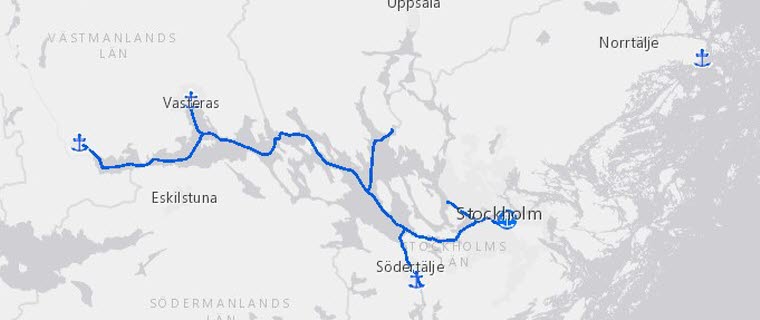Port of Södertälje classified as an IWW-port
From autumn 2017, Port of Södertälje is classified as an IWW-port, an inland waterway port. This means that vessels that are designed for inland shipping and IWW-certified are permitted to be handled in Port of Södertälje.
Within the EU, inland shipping is known as the fifth mode of transportation and is regulated by a European regulation that is completely separate from IMO’s regulation for maritime shipping. The requirements for inland waterway vessels are not as high as for maritime vessels. This makes sense because there are completely different conditions for shipping on the open sea and on inland waterways. Sweden introduced the EU regulations on 16 December 2014. Göta älv, Vänern and Mälaren are examples of Swedish inland waterways.
- Inland shipping is an efficient mode of transportation that complements other modes well, such as rail or road. Transporting material by water instead of on roads can save significant resources both in terms of the environment and economics, says Per Fredman, marketing and sales manager at Port of Södertälje.
In addition to saving energy, the environment and money, transportation on waterways also means increased safety and significantly less disruptive noise and traffic on the public roads. In the Netherlands, inland shipping currently accounts for 47 % of the goods transportation. And in Germany inland shipping transports more goods per year than all trains and trucks combined in Sweden.
- In Sweden, the vast majority of goods are transported with trucks or by rail, despite the fact that the condition of the railway network is in dire need of maintenance and road transport is a worse solution from a climate and congestion point of view, says Per. But before inland and coastal shipping can seriously remove goods from the land infrastructure, a number of obstacles must be removed.
One of these obstacles is the issue of piloting. According to the current rules, ships longer than 70 metres must have a pilot on board when sailing on inland waterways. The piloting rules came in 30 years ago and since then there have been many technical developments, for example electronic charts. A modern inland shipping vessel is, in practice, a truck on the water. But with the same quantity of goods, it only uses a third of the fuel and is therefore superior to trucks from an environmental perspective.
- These regulations must be changed and updated based on modern conditions, Per concludes.
« Back
